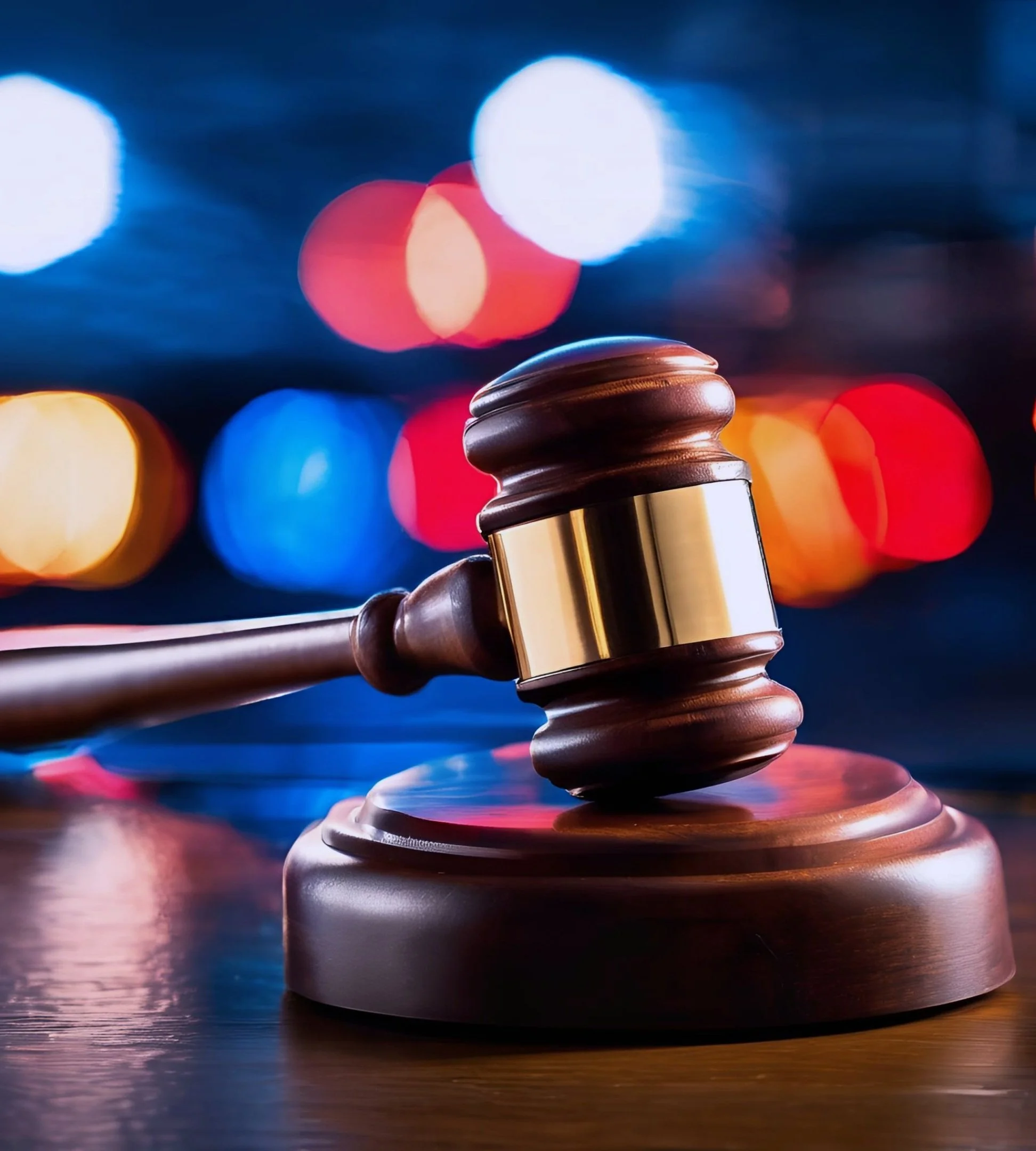White Paper | Overcome Student Fears, Save Lives: Good Samaritan Law for Overdose
Sean Howse, MD, Ryan Foreman, MS & Tahmid Khan, MPH with review by Tom Synan, Chief of Newtown Police Department
“When no one else knows what to do, it's gotta be you.” This latest public awareness campaign from the Office of National Drug Control Policy (ONDCP) and Ad Council reaffirms the necessity of immediate bystander action in the event of an overdose (Ad Council, 2024). The reality is: many bystanders to an overdose fail to provide life-saving action for the victim, while overdose deaths continue to surge among young Americans (CDC SUDORS, 2024). When the means to take life-saving action in this now-common scenario is as simple as making a phone call for help, it is more often misinformed fear than lack of capability that prevents young bystanders from making sure their friend or peer survives a preventable fatality. The need to remedy such hesitancy is especially dire on college campuses, where students — usually the first witnesses to an overdose — fear for criminal consequences when calling for help at the scene of an overdose. Alleviating these fears is precisely the purpose of Good Samaritan Laws.
WHAT ARE GOOD SAMARITAN LAWS FOR OVERDOSE?
Across the US, 49 states and the District of Columbia have ratified Good Samaritan Laws for Overdose to make clear that saving a life is of the highest importance under the law (DopaGE, 2025). The goal is to avoid forcing a bystander to choose between calling 911 and facing a criminal record or allowing an overdose victim to go untreated. Good Samaritan Laws for overdose protect those who call 911 for help on behalf of an overdose victim from arrest, charges, or prosecution for minor possession of illicit substances. In the vast majority of states, the overdose victim is also provided these same protections (DopaGE, 2025). When 911 is called, the operator who answers may choose to send an ambulance, police, or firefighters depending on the emergency. The purpose of Good Samaritan Laws for Overdose is to encourage rapid access of an ambulance to treat the overdose victim while reducing fears of police involvement if there are illicit drugs present at the scene. While the specifics of these laws vary by state, they generally ensure that individuals who call 911—or those experiencing an overdose themselves—are shielded from drug and underage alcohol possession charges.
HOW DO GOOD SAMARITAN LAWS FOR OVERDOSE SAVE LIVES?
Nearly 1 in every 3 overdose deaths had a bystander present that could have intervened to save the victim’s life, but that bystander took no action (CDC SUDORS, 2024). Collegiate administrators play an irreplaceable role in fostering communities where students are well-informed and empowered to take action in an emergency. In ignorance of Good Samaritan Laws for Overdose, many students hesitate to call for help in an overdose emergency due to fear of consequences for illicit substances or underage alcohol present at the scene. Misconceptions about how law enforcement responds to overdose calls leads to delays that cost campuses young lives. By the time emergency medical services arrive at the scene of an overdose, ⅔ of overdose victims already have no pulse (CDC SUDORS, 2024).
When a person overdoses, every minute that a bystander hesitates to call for medical care decreases the likelihood of their survival. Overdoses on depressant drugs - from alcohol to opioids - cause respiratory depression, where the victim’s breathing slows then stops altogether. Just 3 to 6 minutes after breathing stops, irreversible brain injury begins to occur and each additional minute without oxygen increases the risk of death (Winstanley et al., 2021). Opioid overdoses can become fatal within 10 minutes of when the victim stops breathing (Hamilton et al., 2021). Nationally, the average time for ambulances to arrive on scene for an overdose is just over 13 minutes (National Highway Traffic Safety Administration, 2025). If a student suspects their peer is overdosing, they should not spare a minute for concern about consequences for substance use. A campus-wide culture of immediate action can be achieved by promoting awareness of Good Samaritan Laws for Overdose to ensure students’ survival in the event of an overdose.
At the state level, Good Samaritan Laws for Overdose led to reduction in deaths by as much as 10% in just the first 2 years after the law was ratified (Hamilton, Davis, et al., 2021). With few to no public awareness campaigns during that time, the opportunity for reducing overdose deaths through community-wide education on Good Samaritan Law for Overdose is much larger. Current lack of public awareness and understanding of these protections is understandable as just a decade ago, at the outset of 2015, only 17 states had ratified Good Samaritan Laws for Overdose (National Association of County and City Health Officials, 2017). The state of Kansas ratified these protections as recently as December 2024, becoming the 49th state to do so (Kansas State Legislature, 2024). Rapid bystander action that results in overdose survival can be markedly improved by filling this knowledge gap and ensuring community-wide awareness of Good Samaritan Laws for Overdose.
HOW DO GOOD SAMARITAN LAWS FOR OVERDOSE VARY BY STATE?
LEVEL OF PROTECTION KEY
STRONG | In these states there is comprehensive protection where both the 911 caller and overdose victim are fully protected from arrest, charge, and prosecution for possession of both illicit substances and paraphernalia.
MID | In these states there is moderate protection where, EITHER: Both the 911 caller and overdose victim are protected from charge and prosecution for possession of both illicit substances and paraphernalia, but not from arrest. OR: The 911 caller is protected from arrest, charge, and prosecution for possession of illicit substances but the protections do not extend to the overdose victim or do not apply for possession of paraphernalia.
LOW | In these states there is less protection where, EITHER: Both the 911 caller and overdose victim are protected from prosecution for possession of both illicit substances and paraphernalia, but not from arrest or charge. OR: The 911 caller is protected from charge and prosecution, but not from arrest, and the protections do not extend to the overdose victim and/or do not apply for possession of paraphernalia.
POOR | Individuals in these states are hardly protected where the 911 caller is protected from prosecution only or is granted an affirmative defense from prosecution. This minimal protection may not extend to the overdose victim or may not apply for possession of paraphernalia.
NONE | There is no Good Samaritan Law for Overdose providing protections in this state.
* | Indicates underage alcohol possession or use is protected under Good Samaritan Law in these states.
+ | Indicates these states have a Duty to Assist statute where a bystander is required by law to seek assistance for the overdose victim.
When considering the level of protection that each state’s respective Good Samaritan Law provides, it is important to consider what factors are most effective in reducing an individual’s fear of contacting emergency services when there are illicit materials present at the scene. These factors include protection from arrest, charge, or prosecution, and whether these protections apply only to the bystander who calls 911 or extend to the overdose victim as well. Good Samaritan Laws for Overdose that provide protection from arrest most significantly increase a bystander’s likelihood of contacting emergency services, more so than protections from charges or prosecution (Hamilton, Davis, et al., 2021). 28 states and the District of Columbia provide protections against arrest when calling 911 in the event of an overdose, making it vital for individuals in these states to know their rights and have the confidence to respond in the event of an emergency. Of the 22 states that do not protect from arrest, half protect against charge for minor possession of illicit substances (DopaGE, 2025). Although less potent in reducing fears, this still provides a caller or victim significant protection against criminal liability and should make them confident in their course of response. Notably, Louisiana, Minnesota, Rhode Island, and Virginia have legislation that requires any bystander to an emergency to respond by contacting emergency services or they may face legal action (DopaGE, 2025). It is particularly important in these states, as well as broadly across the US, that individuals know their rights and responsibilities and feel ready to act. With this in mind, the ratings presented above for individual states’ Good Samaritan Laws for Overdose are designed according to the factors most likely to reduce an individual’s hesitancy to contact emergency services due to fear of law enforcement penalization.
The persistence of inaction and fear among students stems from a lack of knowledge regarding the protections provided by Good Samaritan Laws. Research has shown that awareness of these laws remains low among the general public, including those most likely to witness an overdose (Evans, Hadland, Clark, Green, & Marshall, 2016; Latimore & Bergstein, 2017). The effectiveness of Good Samaritan Laws is contingent upon individuals being aware of the existing legal safeguards (Hamilton, Davis, et al., 2021), therefore, universities have the opportunity to educate students about both the legal and moral imperatives of overdose intervention. Strengthening education on these laws improves student confidence in their state specific protections to ensure a culture of immediate action. The DopaGE Overdose Prevention Portal includes scenario-based training for matriculating students on Good Samaritan Law for Overdose to eliminate uncertainty and hesitation, thereby promoting rapid response skills campus-wide and keeping communities protected in the event of an accidental overdose.
REFERENCES
Ad Council. (2024). It’s gotta be you: Overdose prevention campaign. Retrieved from https://www.adcouncil.org/asset/its-gotta-be-you/204586504
Centers for Disease Control and Prevention (CDC). (2024). State Unintentional Drug Overdose Reporting System (SUDORS) report on bystander intervention. Retrieved from https://www.cdc.gov/drugoverdose/
Winstanley, E. L., Stover, A. N., Bonny, A. E., & Shoben, A. B. (2021). The role of bystanders in preventing opioid overdose fatalities: A review of legal protections and barriers to calling 911. Substance Abuse Treatment, Prevention, and Policy, 16(1), 10. Retrieved from https://doi.org/10.1186/s13011-021-00351-6
Hamilton, L., Davis, C. S., Kravitz-Wirtz, N., Ponicki, W., & Cerdá, M. (2021). Good Samaritan Laws and overdose mortality in the United States in the fentanyl era. International Journal of Drug Policy, 97, 103294. Retrieved from https://doi.org/10.1016/j.drugpo.2021.103294
National Highway Traffic Safety Administration (NHTSA). (2025). Emergency medical services response time report. Retrieved from https://www.nhtsa.gov/
National Association of County and City Health Officials (NACCHO). (2024). Legislative interventions to reduce overdose mortality: Harm reduction toolkit. Retrieved from https://www.naccho.org/uploads/downloadable-resources/HRR-legislative-interventions-reduce-overdose-mortality-toolkit00.pdf
Kansas State Legislature. (2024). Senate Bill No. 419. Retrieved from https://kslegislature.gov/li_2024/b2023_24/measures/sb419/
Evans, T. I., Hadland, S. E., Clark, M. A., Green, T. C., & Marshall, B. D. L. (2016). Factors associated with knowledge of a Good Samaritan Law among young adults who use prescription opioids non-medically. Harm Reduction Journal, 13(1), 24. Retrieved from https://doi.org/10.1186/s12954-016-0113-2
Latimore, A. D., & Bergstein, R. S. (2017). “Caught with a body” yet protected by law? Calling 911 for opioid overdose in the context of the Good Samaritan Law. International Journal of Drug Policy, 50, 82–89. Retrieved from https://doi.org/10.1016/j.drugpo.2017.09.010


